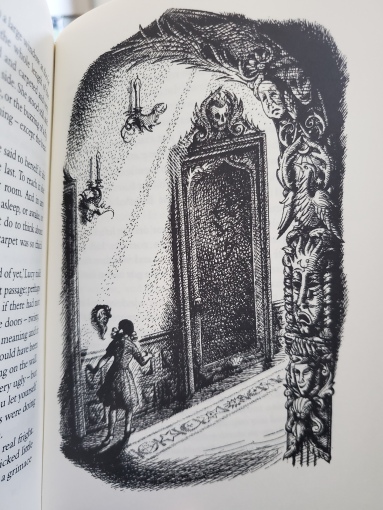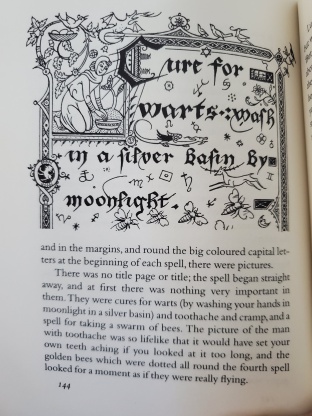It was a large room with three big windows and it was lined from floor to ceiling with books; more books than Lucy had ever seen before, tiny little books, fat and dumpy books, and books bigger than any church Bible you have ever see, all bound in leather and smelling old and learned and magical. But she knew from her instructions that she need not bother about any of these. For the Book, the Magic Book, was lying on a reading-desk in the very middle of the room. . .
– C. S. Lewis, The Voyage of the Dawn Treader, Chapter 10.
The Ordinal of Alchemy is a text written by Thomas Norton, a Bristol gentleman just below the rank of Knight, who lived about 1435 to somewhere in the neighbourhood of 1515. The book is a long poem in rhymed couplets (in this similar to most of Chaucer’s Canterbury Tales) in which Norton gives instruction on the recommended course to follow to advance in the understanding and practice of Alchemy. In the poem Norton tells us of his own progress, of his teacher, and of his own experiences as a gentleman of the court of a king (Edward IV) himself interested in Alchemical studies. The burden of duties at court led Norton to abandon his alchemical studies until later in life when he composed The Ordinal.

Pauline Baynes’ illustration of Lucy approaching the Magician’s Library
While reading The Ordinal I found myself slowly realizing that I was quietly fulfilling a childhood dream that I might one day read actual books of magic in their original languages. Very early in my life I had read C. S. Lewis’ Narnia books and I have been quietly haunted by the scene in The Voyage of the Dawn Treader – actually haunted by Pauline Baynes’ illustration of the chapter in which Lucy discovers the Magician’s Book of spells. Later in life I had read silly New Age books of fake witchcraft and found them absurd, uninspired, and uninspiring. And I have spent many years studying the twelve Old English metrical charms, which are in an authentic voice like that of Norton, but have tragically been appropriated by shallow crystalline herbal wiccans on neo-pagan websites. It was only when reading The Ordinal of Alchemy, hidden behind it’s obscurity of language and image, that I came to realize that I was finally – had actually long been – truly in the Magician’s library.
By no means is Norton’s Ordinal a guide to magic or alchemy that actually works, any more than the Old English charms have much other than an accidental or psychological efficacy. While Norton’s description (in lines 2843 ff.) of the furnace he himself invented gives a very clear picture of a remarkable piece of engineering, the discussion of actual alchemical procedures is extremely obscure. Much of the work, as would perhaps be expected, is moral and religious (Lewdnes to cese is bettir late then nevyre. [l. 3098]), but it is all seasoned with what must be termed truly scientific theory and moments of true experiment. Surprisingly, the fundamental instruction to the aspiring alchemist is basic capitalist advice concerning how to retain good help in one’s employ:
Therefore if ye wil voyde alle dreede,
In the grose werke do bi my reede:
Take nevir thertoo no howsholde man,
Thei ben soone wery as I telle can;
Therfore take no man therto
But he be wagide, how evir ye do,
Not bi the monthe as nye as ye may,
Ne bi the weeke, but bi the daye;
And that your wagis be to theire mynde
Bettir then thei elsewere can fynde;
And that thei nede not for wagis sewe,
But that their payment be quyke & trewe.
ll. 1349-1360
That’s right — pay them a competitive, living wage!
Much of what Norton discusses is, as he acknowledges, rehearsal of alchemical doctrine that has come down from his predecessors in the art:
Olde men wrote in avncyen tyme
How that of sapours there be fulli nyne:
Which ye may lerne within half an houre
As sharpe tase, vntuous, and sowre
Which iij to Meen mater testifye,
As byting taste, saltish, & werish alle-so;
Othir iij came thikke substance fro,
As bitter taste, undersowre, and dowce,
These ix be fownde in many a noble howse.
ll. 2107-2116
This model of nine fundamental tastes does not, of course, fit with modern conceptions of the mechanics of taste — four fundamental flavours when I was a boy; five now that I am a man — but the model is not inaccurate, simply in need of refinement.
And Norton is not an undiscerning devotee of all things magical:
Trust not Geomancye, that supersticious arte,
For god made reason which yer is sett a-parte;
Trust not to all astrologyeris, I say why,
For that arte is as secrete as alchymye.
ll. 2973-2976
Even alchemy is an art, not quite a science, but
No man is sure to haue his entent
With-owte ful concorde of arte with Instrument.
ll. 2897-2898
The proper tools are fundamental to success.
At times Norton seems to be saying something that makes a sort of sense to the modern reader, but we are not seeing his intent:
Liquour conioynyth male with female wyfe,
And causith dede thingis to resorte to lyfe;
Liquours clansith with their ablucion;
Liquours to oure stone be chief nutricion,
Without liquours no mete is goode,
Liquours conveith alle Alimente & fode
To euery parte of mannys bodie . . .
ll. 2189-2195
Although this may seem to be a celebration of the wonderful virtues of strong drink, this is actually a purely alchemical passage and the “liquours” in question are not such as we might tipple on a winter evening before the fire in our study. Norton’s liquours are precursors to the manufacture of Elixer, which is itself necessary to the production of the final goal: The (Philosopher’s) Stone.
In our post-Descartes world we often have discussions of the mind/body question. Some will feel that we must understand them to be some sort of dualism, that there is a soulful ghost in the fleshly machine. Others see things in a somewhat purely materialist sense, that what we think of as consciousness is just the cerebral flesh doing its thing, the software of the mind running on the wetware of the brain. But Norton tantalizes with a different, tripartite model:
Therefore in oure werk, as auctours techith vs,
There must be Corpus, anima, & spiritus.
ll. 2397-2398
One part body, one part soul, and one part spirit. This distinction between soul and spirit seems foreign to both the materialist and dualist modern mind, but, whatever it means, it is fundamental to the work Norton is trying to teach. Anyone who wishes to grasp the foreign Medieval intellectual world that produced The Ordinal of Alchemy must wrestle with such different categories of experience and understanding.

Pauline Baynes’ illustration of the Magician’s Book
As far as he testifies, Norton was never successful in reaching his alchemical goals. But he has left to us a marvelous window into the Medieval alchemical world. And he has made manifest to me the transformation of a naïve childhood goal into a happy adult awareness. In this real, true Magician’s book Thomas Norton has given us is a challenging history of a difficult and lonely life spent trying (largely unsuccessfully) to understand the world and our relation to it, not the easy-reading text of a weekend workshop on “
the practical and experiential knowledge that can help you manifest and change your life!“

